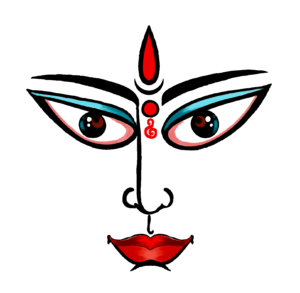
Exploring the Fierce Grace of
Mahishmardini Mata
The Shakti Pitha of Mighty Eyes
Location :
Shivaharkaray, Sukkur
Heading :
Journey to Shivaharkaray: Exploring the Fierce Grace of Mahishmardini Mata – The Shakti Pitha of Mighty Eyes
Introduction :
Amidst the arid landscapes of Pakistan, nestled near Karachi in Sukkur, lies a place of profound spiritual significance – Shivaharkaray. This ancient town is home to the fierce grace of Mahishmardini Mata, whose Shakti Pitha is marked by the sanctity of her eyes. Join us on a spiritual expedition as we explore the mystique, history, and devotion that envelop the first Shakti Pitha of Mahishmardini Mata.
The Legend of Mahishmardini Mata :
The story of Shivaharkaray and the Shakti Pitha of Mahishmardini Mata is steeped in mythological richness. The focal point of this legend is the eyes of the goddess, symbolizing the insight and vision that she imparts to her devotees. Mahishmardini Mata, an incarnation of Durga, embodies the powerful and fierce aspect of the Divine Mother. She is the annihilator of evil and the protector of righteousness.
The origin of Mahishmardini Mata lies in her divine manifestation to combat the demon Mahishasura, who threatened the cosmos. With her fierce grace and mighty eyes, she vanquished the demon, and her eyes remain a symbol of her all-seeing, omnipotent gaze.
The Sacred Sanctuary – Shivaharkaray Temple :
The Shivaharkaray Temple stands as an embodiment of spirituality and divinity in this ancient town. This temple, though modest in its architectural grandeur, radiates an aura of sanctity that has drawn countless pilgrims and devotees for centuries. The entrance of the temple is marked by a simple yet majestic gateway, inviting all who seek the blessings of Mahishmardini Mata.
As you enter the temple premises, you are greeted by the idol of the goddess herself. Mahishmardini Mata stands with her fierce gaze, her ten arms holding potent weapons, symbolizing her unwavering commitment to vanquish evil. Her eyes, in particular, are believed to offer the divine insight needed for spiritual growth and protection from malevolence.
The Enigmatic Inner Sanctum :
The inner sanctum of the Shivaharkaray Temple houses the idol of Mahishmardini Mata. The vibrant energy within the sanctum, enhanced by the fragrance of incense and the melodies of devotional chants, makes it a place of unparalleled serenity. Devotees gather here to seek the grace and protection of the Divine Mother, believing that her all-seeing eyes safeguard them from harm.
Pilgrimage and Devotion :
The Shivaharkaray Temple is not just a place of worship; it’s a symbol of devotion and spirituality for those who make the pilgrimage. Devotees, both local and from afar, visit the temple to immerse themselves in the fierce grace of Mahishmardini Mata. It is believed that her eyes, which have witnessed the triumph over evil, bestow protection, insight, and spiritual awakening.
The temple’s tranquil ambiance and the collective devotion of the pilgrims create an atmosphere that resonates with the fierce yet benevolent energy of the goddess.
Cultural Celebrations :
The Shivaharkaray Temple is a hub of festivities throughout the year. The annual Navaratri festival, celebrated with great fervor, is a time when the temple comes alive with processions, music, and vibrant rituals. It is a time when the divine eyes of Mahishmardini Mata are celebrated for their role in the triumph of good over evil.
Conclusion :
The Shakti Pitha of Mahishmardini Mata in Shivaharkaray, Sukkur, is not just a place of worship but a pilgrimage into the fierce grace and protection of the Divine Mother. It is a destination where the divine and the earthly merge, where her mighty eyes offer insight and safeguarding from malevolence. Shivaharkaray, with its spiritual resonance and sanctity, stands as a testimony to the enduring devotion of the region, leaving visitors with a profound sense of peace, insight, and spirituality.
Editor – Kaalchakra Team
[ Note – Before Concluding anything as a Finale, Please Go through Original Scriptures of Vaidik Literature Written in Sanskrit and Also with Meaning of That time of Language. Because English is a Limited language to Explaining the Deeper Knowledge of Vaidik Kaal. ]
